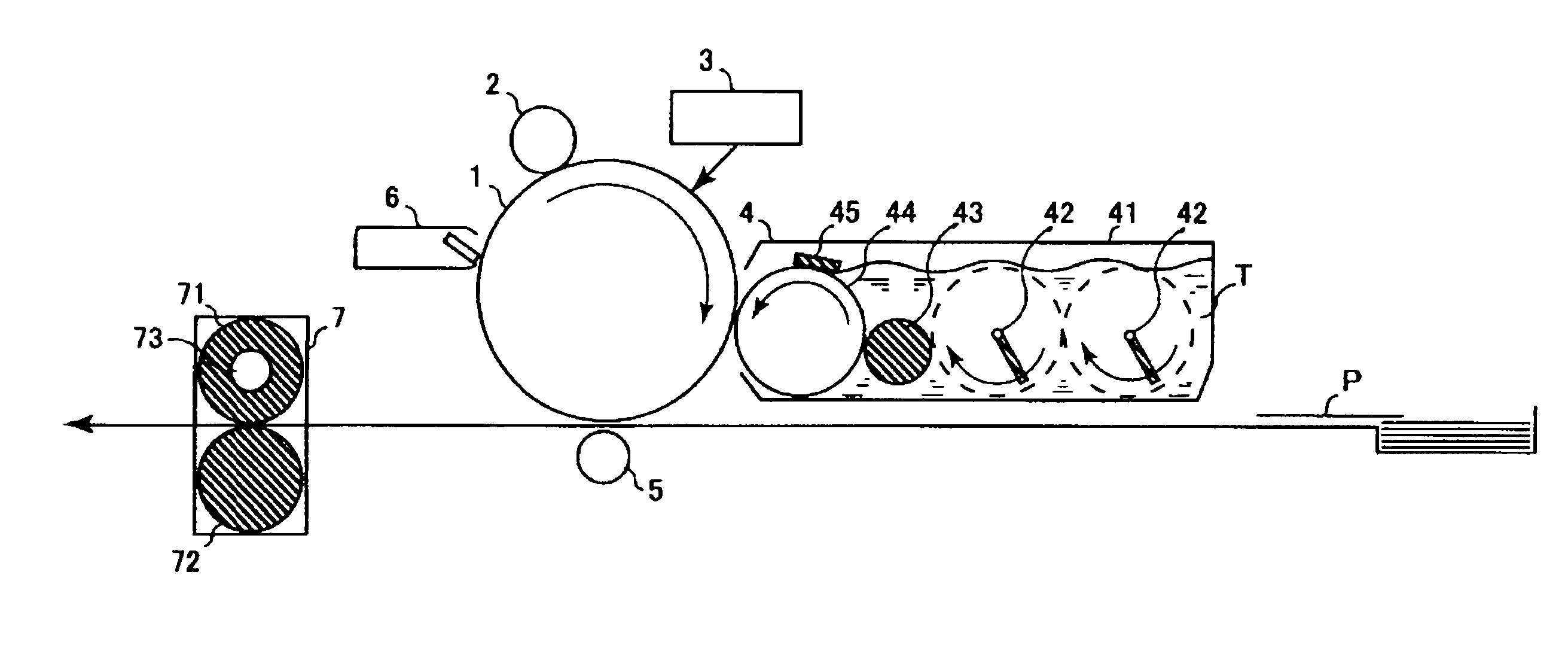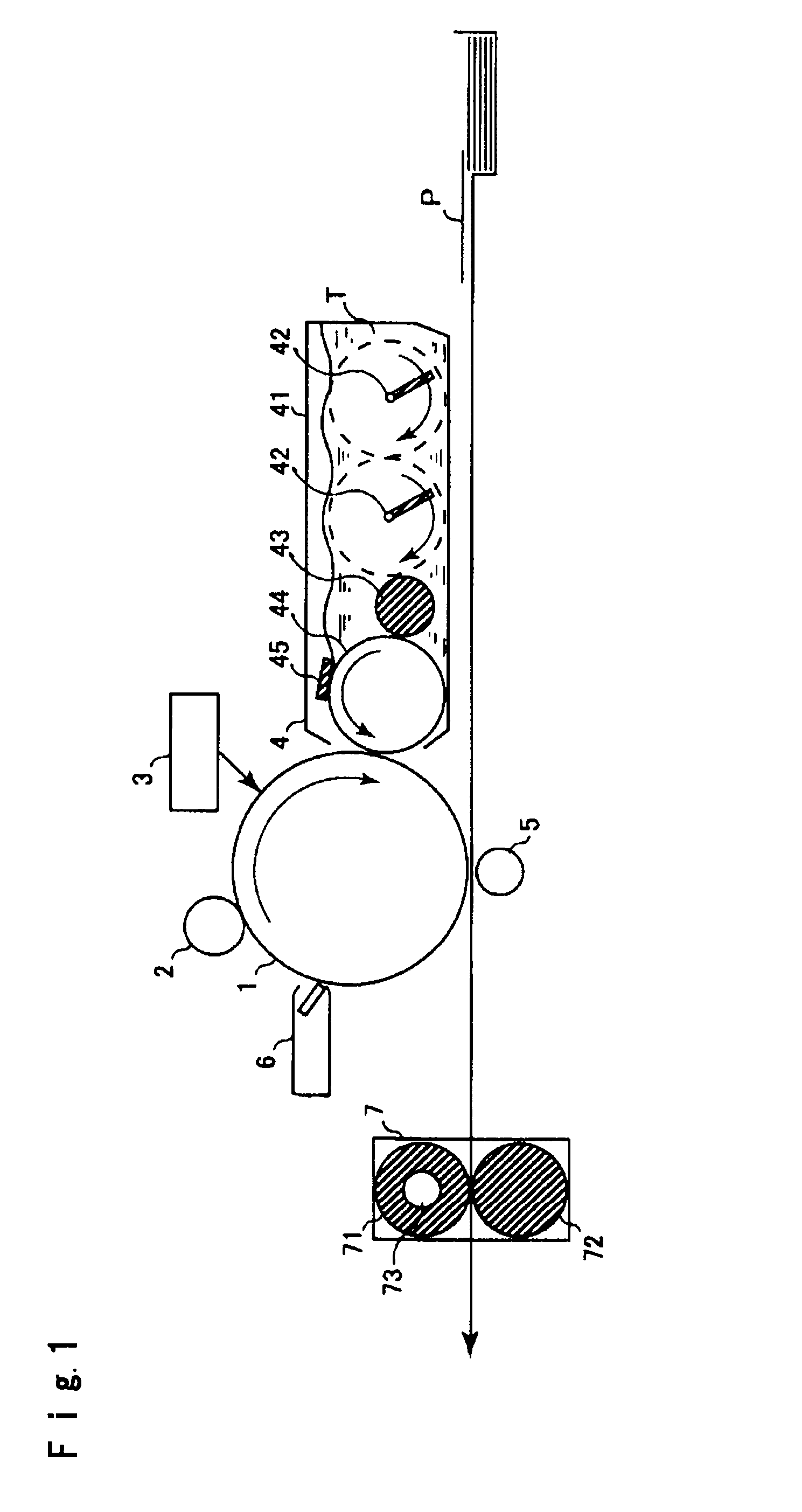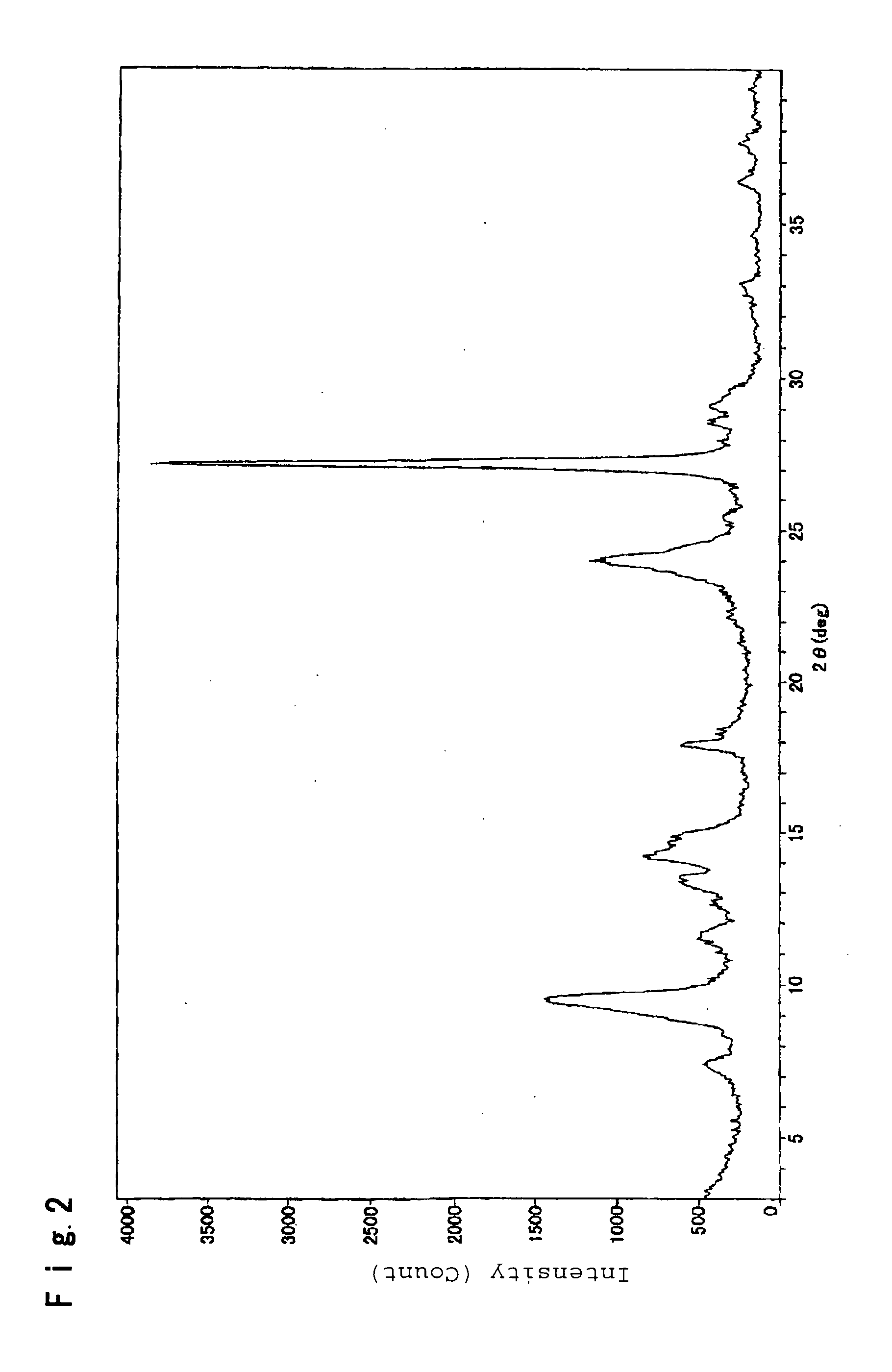Electrophotographic photoreceptor and apparatus for image formation
- Summary
- Abstract
- Description
- Claims
- Application Information
AI Technical Summary
Benefits of technology
Problems solved by technology
Method used
Image
Examples
preparation example 1
Preparation of Charge Transport Material (1)
[0182]In 300 mL of nitrobenzene, 40 g of p-ditolylamine and 48 g of 4,4′-diiodo-p-terphenyl were heated and stirred at 200° C., and 46 g of copper powder and 100 g of potassium carbonate were added thereto, followed by a reaction at 200° C. for 5 hours in a nitrogen stream. Thereafter, the reaction mixture was cooled to 50° C., and 200 mL of tetrahydrofuran was added thereto, whereupon the solid was collected by filtration. The filtrate was poured into 2,000 mL of methanol, and a precipitate was collected by filtration and purified by silica gel column chromatography to obtain 39 g of a charge transport material (1). The structure was confirmed by mass analysis (m / z): M+=620 (theoretical value: 620) and elemental analysis (C46H40N2): C, 89.10; H, 6.67; N, 4.40 (theoretical values: C, 88.99; H, 6.49; N, 4.51)
preparation example 2
Preparation of Charge Transport Material (2)
[0183]In 300 mL of nitrobenzene, 40 g of m,p′-dimethyldiphenylamine and 48 g of 4,4′-diiodo-p-terphenyl were heated and stirred at 200° C., and 46 g of copper powder and 100 g of potassium carbonate were added thereto, followed by a reaction at 200° C. for 5 hours in a nitrogen stream. Thereafter, the reaction mixture was cooled to 50° C., and 200 mL of tetrahydrofuran was added thereto, whereupon the solid was collected by filtration. The filtrate was poured into 2,000 mL of methanol, and a precipitate was collected by filtration and purified by silica gel column chromatography to obtain 40 g of a charge transport material (2). The structure was confirmed by mass analysis (m / z): M+=620 (theoretical value: 620) and elemental analysis (C46H40N2): C, 89.00; H, 6.57; N, 4.50 (theoretical values: C, 88.99; H, 6.49; N, 4.51)
preparation example 3
Preparation of Charge Transport Material (3)
[0184]Instead of p-ditolylamine used in Preparation Example 1, p-methoxydiphenylamine was used to obtain 42 g of a charge transport material (3). The structure was confirmed by mass analysis (m / z): M+=624 (theoretical value: 624) and elemental analysis (C44H36N2O2): C, 84.50; H, 5.95; N, 4.50 (theoretical values: C, 84.59; H, 5.81; N, 4.48)
PUM
| Property | Measurement | Unit |
|---|---|---|
| Nanoscale particle size | aaaaa | aaaaa |
| Wavelength | aaaaa | aaaaa |
| Fraction | aaaaa | aaaaa |
Abstract
Description
Claims
Application Information
 Login to View More
Login to View More - R&D
- Intellectual Property
- Life Sciences
- Materials
- Tech Scout
- Unparalleled Data Quality
- Higher Quality Content
- 60% Fewer Hallucinations
Browse by: Latest US Patents, China's latest patents, Technical Efficacy Thesaurus, Application Domain, Technology Topic, Popular Technical Reports.
© 2025 PatSnap. All rights reserved.Legal|Privacy policy|Modern Slavery Act Transparency Statement|Sitemap|About US| Contact US: help@patsnap.com



